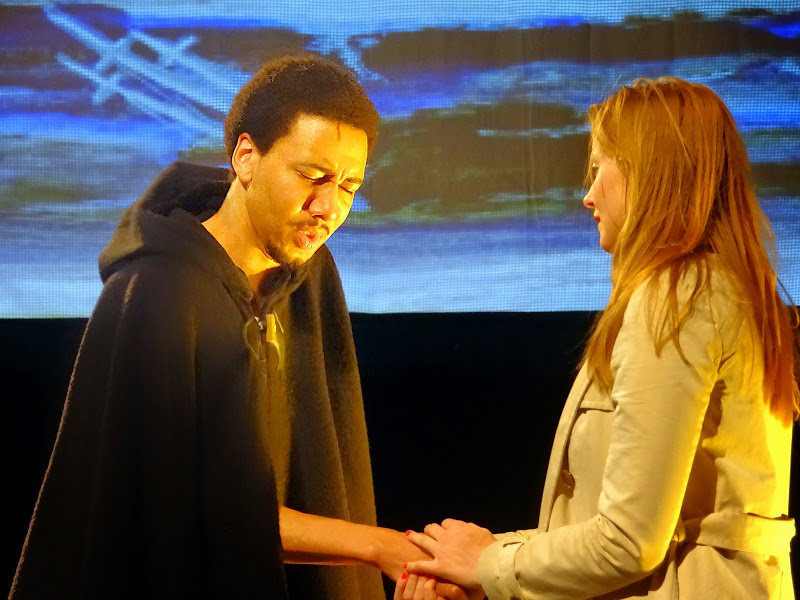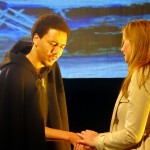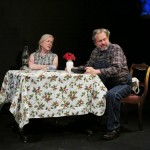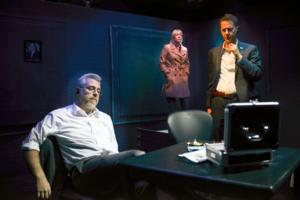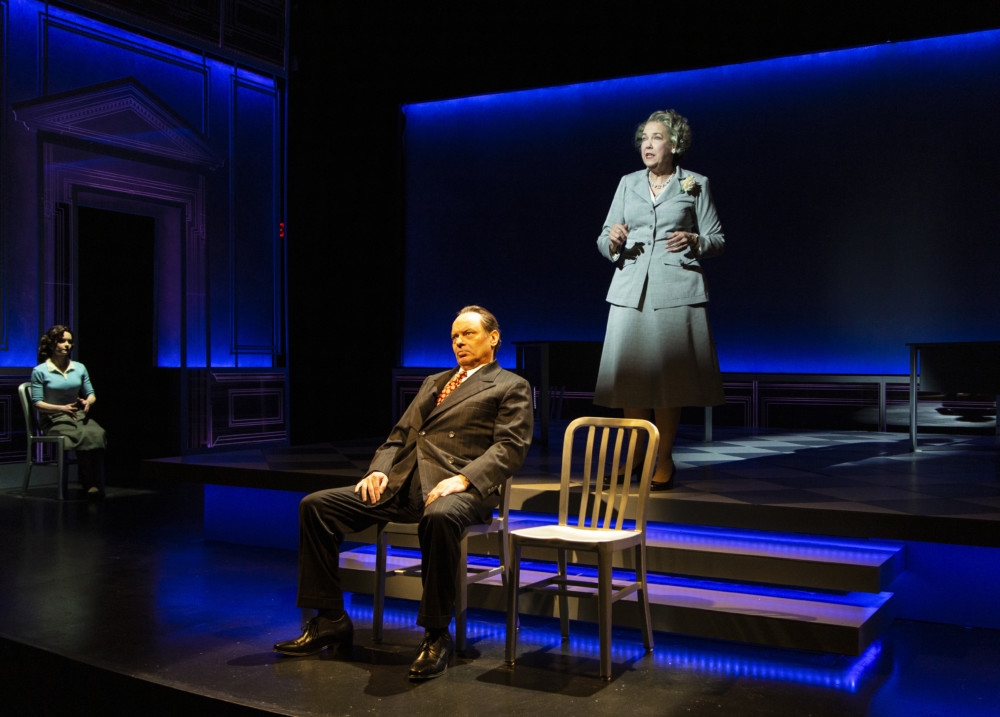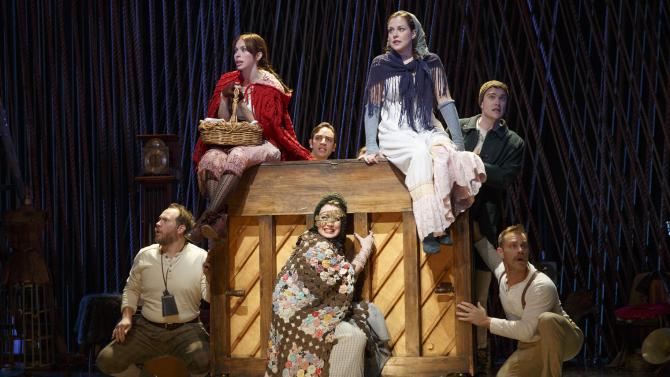By Eric J. Grimm
The August Strindberg Repertory Theatre has taken on the ambitious task of presenting To Damascus in three parts over three years. The first part is currently playing at the historic Gene Frankel Theatre in Downtown Manhattan. The tale of a radical revolutionary writer who marries the wife of his enemy and begins a hallucinatory descent into madness has been updated to Harlem in 1962, adding even more emotional weight to the often bleak Scandinavian drama. The setting switch is clever, though not always believable, and the performers are mostly successful in channeling Strindberg’s pain and whimsy.
DeSean Stokes plays the updated Stranger, who has been exiled from a non-violent civil rights movement in the early sixties. The play is heavy on dialogue and Stokes frequently speaks at a rapid fire pace that sometimes trips him up, but he is charismatic in early scenes and convincingly tortured as The Stranger’s past transgressions come back to haunt him. Kersti Bryan is extremely affective as The Lady, who abandons her husband for The Stranger. We may not understand why The Lady is so committed to her tortured lover, but Bryan makes the connection viable throughout. Her strong vocal delivery gives the whole affair a proper sense of urgency.
The supporting players are mostly fine here. Victor Arnez as the vengeful Doctor and Victoria Blankenship as The Lady’s Mother have similar strengths and weaknesses as the play’s antagonists. They often nail devastating lines that cut to the core of The Stranger’s flaws, though they sometimes fall into the trap of playing highly theatrical villains. Nathan James, as the philosophical Beggar, is the best of the bunch. Easily the least troubled of all the characters, The Beggar acts as the moral compass of the show, and James plays him with confidence and a tragic knowledge of injustice in the world.
While I appreciated director/translator Robert Greer’s ambition in updating the show to Civil Rights Era Harlem, I had trouble with suspending my disbelief with the very specific setting. Greer includes a detailed plot synopsis in the program, which frames the events of the play within this setting. It’s necessary reading to understand how Strindberg’s 1898 play can be set in Harlem in 1962 and it’s a bit much to take in prior to a show. A more organic fusion of text and an updated timeline might have been easier to process. The update is particularly difficult to process where the character of The Lady is concerned. As a white woman who has married two black men, The Doctor and The Stranger, she is never questioned or shamed for her interracial relationships in the 1960s as this is not a factor in Strindberg’s original text. That said, the concept works when focusing solely on The Stranger, who is plagued by both his charismatic nature, as the leader of a revolution, and his own deeply flawed character. The comparison with other Civil Rights leaders is not a stretch and is a great way to engage with the 116-year-old play on a different level.
To Damascus is playing at the Gene Frankel Theatre (24 Bond St.; 212-868-4444) from April 20-May 11.


